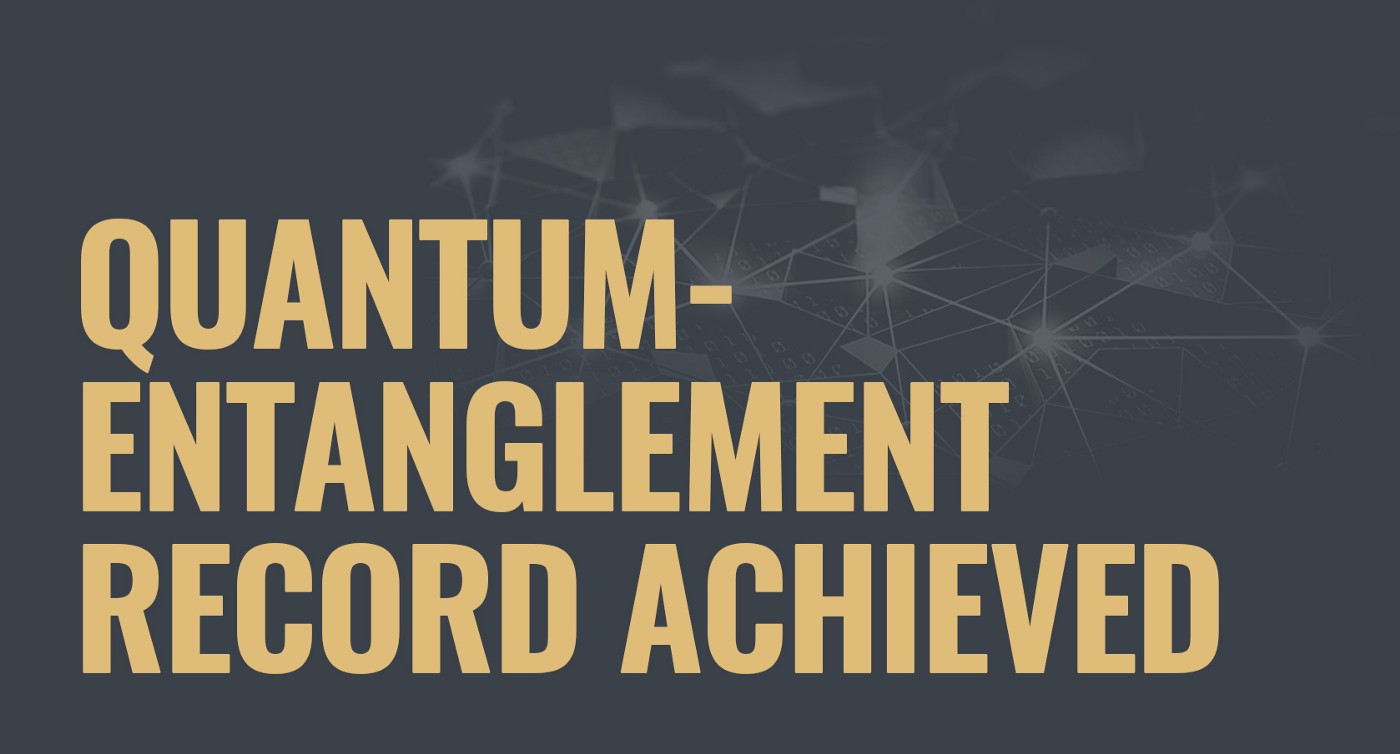Quantum-Entanglement industry record — packing the qubits tight
Category: About

Another groundbreaking record which takes us a bit closer to the technology-driven future. Recently, physicists were able to pack three qubits into each of six entangled photons.
The US scientists had recently come up with the 18 qubits set into just six connected photons. Fact is, that makes a yet unbelievable record of working with the most basic units of quantum computing. Basically, three are qubits per photon and a record for the number of qubits linked to one another by quantum entanglement.
Understanding the Q-bits
Speaking about it in detail, all the conventional computer calculations rely on so-called bits, which can switch back and forth between two states (which are usually are either “1” or “0”).
The quantum computers work actually using qubits, which similarly waver between two states but behave according to the weirder rules of quantum physics. So, unlike the conventional bits, qubits can have indeterminate states — neither 1 nor 0, but a possibility of both — and become oddly connected or entangled, so that the behavior of one bit directly impacts the other.
The stated facts, in theory, allow different calculations to be executed that regular computers can barely pull off. At the moment, the quantum computing is at its very early experimental stages, with researchers still testing the waters of what’s possible.
Due to to Sydney Schreppler, a quantum physicist at the University of California, Berkeley, who was not involved in the research, was likely only possible because the team at the University of Science and Technology of China (USTC) managed to pack so many qubits into so few particles.She told earlier that, “If the goal is to make 18, the way groups … would have done that in the past is to make 18 entangled particles with one [qubit] each. It’s going to be a slow process.”
However, it takes “many seconds” to entangle just the six particles used in the experiment; she said — already an eternity in computer time, where a new entanglement process must begin for each calculation. Moreover, each additional particle added to the entanglement takes longer to join the party than the last, to the point that it would be entirely unreasonable for build an 18-qubit entanglement, one qubit at a time.
One can say, that, on the contrary, there are plenty of quantum developments which are based on the idea involving more than 18 qubits. That’s right, but in those experiments, the qubits aren’t all entangled. The systems entangle just a few neighboring qubits for each calculation instead.
To pack each of the six entangled particles (photons, in this case) with three qubits, the researchers took advantage of the photons’ “multiple degrees of freedom,” they reported in a paper that was published June 28 in the journal Physical Review Letters.
The degree of freedom
When a qubit is encoded into a particle, it’s encoded into one of the states the particle can flip back and forth between — like its polarization, or its quantum spin.
Every step of those can be referred to as the “degree of freedom.” A typical quantum experiment involves just one degree of freedom across all the particles involved. The particles like photons, however, have many of them, and by coding using more than one of those at the same time — something researchers have dabbled in before, but not to this extreme — a quantum system can pack a lot more information into fewer particles.“It’s as though you took six bits in your computer, but each bit tripled in how much information it could hold,” Schreppler said, “and they can do that pretty quickly and pretty efficiently.”
Anyway, by her words, the fact that the USTC researchers pulled off this experiment, doesn’t mean quantum computing experiments elsewhere will start to involve many more degrees of freedom at a time. Photons are particularly useful for certain kinds of quantum operations and — most importantly, quantum networking, in which information is transmitted among multiple quantum computers. However, other forms of qubits, like those in the superconducting circuits Schreppler works on, might not take to this kind of operation as easily.
The question is still present, whether all of the entangled qubits interact equally, or whether there are differences between qubit interactions on the same particle or qubit interactions across different degrees of freedom.Moreover, the researchers say that this sort of experimental setup might allow for specific quantum calculations that, until now, had been discussed only theoretically and had never been put into action. No doubt, that the nearest future will bring us more amazing experiments and their outcome which will result in impressive technological advancements.
Recent news
-
D-Wave: A road to quantum system
27 Jul 2018
-
Biochips technology— the AI-powered future
25 Jul 2018
-
Quantum computing vs the future of blockchain tech
23 Jul 2018
-
Why Cellframe?
18 Jul 2018
